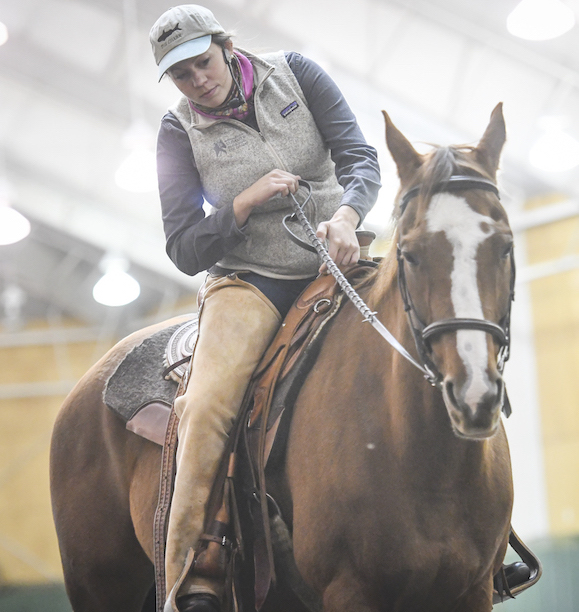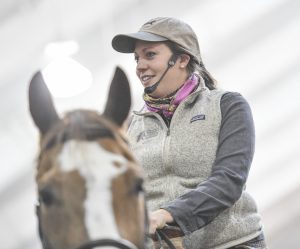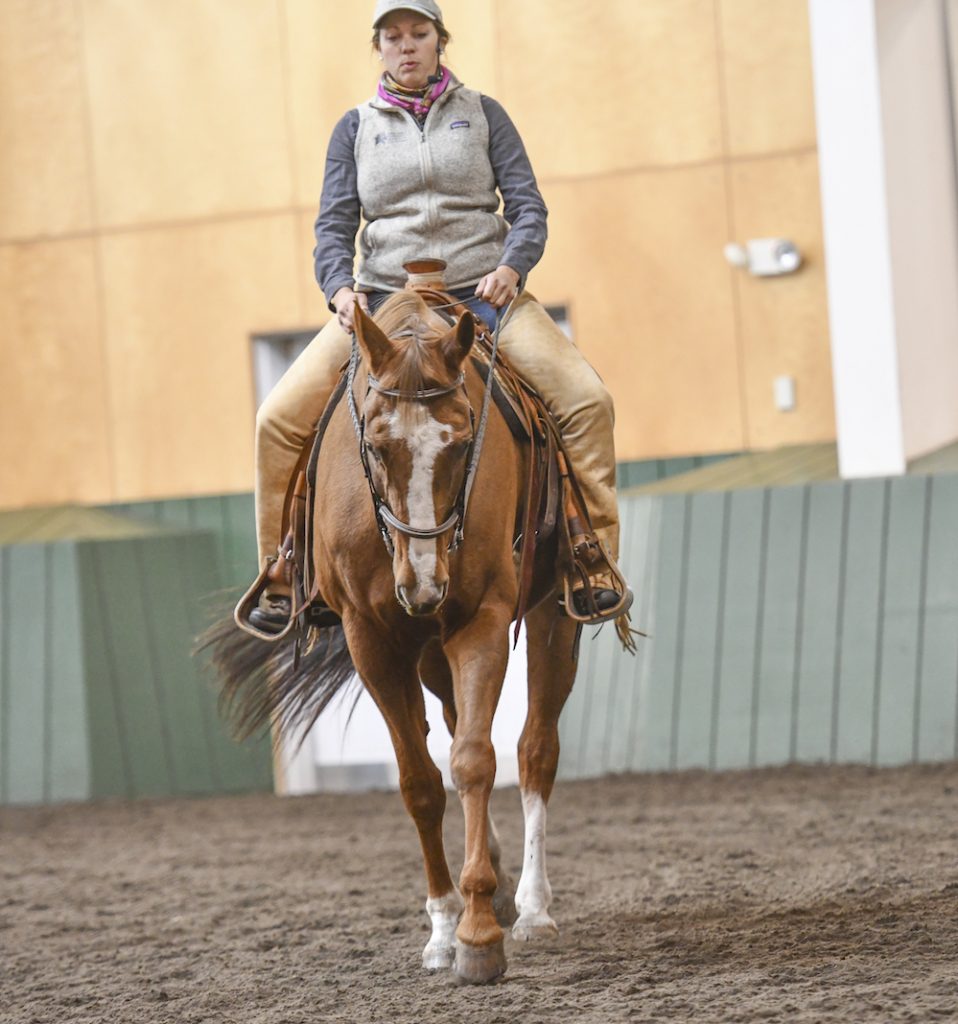
Nina Fuller photo
Editor’s Note: Amy Skinner is a regular Cayuse columnist and has been a horse gal since age six. She presented with fellow trainer and rider, Katrin Silva, at the Best Horse Practices Summit.
Skinner rides and teaches dressage and Western. Skinner has studied at the Royal Andalusian School of Equestrian Art in Spain, with Buck Brannaman, Leslie Desmond, Brent Graef, and many others. Visit Amy’s website here.
Buy her new book, To Catch A Horse here.
Amy Skinner writes:
I’ve written a lot about going slowly and taking the horse’s time. But did you know it’s possible to go too slowly? Sometimes it can be just as damaging as going too fast. Going slowly isn’t good on its own. You must go slowly with timing and knowledge.
 Sometimes a client will bring me a horse to work on a problem that has an easy fix. The problem could have been eliminated immediately had the client understood what they were looking at and had the timing to fix it.
Sometimes a client will bring me a horse to work on a problem that has an easy fix. The problem could have been eliminated immediately had the client understood what they were looking at and had the timing to fix it.
Sometimes they want to be kind and soft, but, as a result, they become ineffective. The horse continues with the undesirable behavior and the client ends up nurturing a wrong frame of mind. This frame of mind is carried into all the work they do together, and over time it cements.
The problem that might have been a five-minute fix becomes a deeply ingrained habit.
For example:
I once trailer-loaded a horse after a clinic after his poor owner had struggled for hours to get him on. As she led him up the ramp, he would tip his nose away from the trailer and his entire body would follow, taking him away from the trailer.
In the interest of going slow and being patient, she would circle him around and try to load again. He kept repeating this behavior. It became worse and worse. Soon, he wouldn’t go anywhere near the trailer. When any pressure was put on him to walk forward, he became very reactive. In his mind, this is exactly what he was supposed to do.

Nina Fuller photo
If his crookedness had been corrected immediately, he might have walked right on. When I came over to help load him, I focused on keeping him straight. As soon as I got him thinking about staying straight, he loaded up and stayed there. I gave him all the time in the world to think and to make choices, but I was quick to block options that would lead to him being more confused about getting in the trailer.
Another example involves green horses:
While it’s important to go slowly with young horses, you don’t want to move at a pace that can cause boredom and lack of interest. If you repeat the same work every day, they learn to tune out or find coping behaviors:
- chewing on rope or reins
- wandering on the lead line
- inattentiveness, dullness, or overreaction to outside stimuli
Horses that aren’t focussed often spook more. Introducing new things frequently to a young horse can be very beneficial, provided the horse is not too anxious about it.
Going slowly is not beneficial if you’re missing important details and not correcting elements that lead to bigger problems.
Going slowly is not beneficial if the horse is bored or inattentive.
Going slowly is not beneficial if your timing is off.
Going slowly is especially detrimental if the horse is getting worse, not better.
Give your horse time to think and adjust. But don’t wait forever if their attention has left, or if they’re working on the wrong things. Guide gently, be flexible, and most importantly, be effective.
Yes, especially ( for me) the example of the bored and inattentive green horse. My background included lots of early starts and training for Arabians, where being calm and light help quite a few through their reactivity. I now have a young quarter horse that I am starting who is the personification of peaceful, although she is also curious and easily bored. The amount of time it took for the Arabians to settle and be happy with the first new things is not what my new horse tells me she needs. I am the one who must adjust or she checks out. Thanks for this!
the cowboy adage that complements your thoughts “Sometimes you have to leave at the pace the horse wants, so he comes home at the pace you want.” I’ve seen people, and ahem done it myself, try to do the slow when the horse really needs to move their feet, restricting them just makes it worse. Did a ride yesterday that we moved like the wind down the road away from home until oxygen got the better of the filly and the rest of the ride was brilliant with lots of transitions up and down and home on a loose rein 🙂 Have a feeling if I’d tried making her “walk” the entire ride would have been a battle, neither of us coming out ahead. Thanks for the share always enjoy your thoughts.
Great commentary Amy! Going slow is o only effective if you are keeping your horse “on point” or attentive to the task. I really liked your trailer loading example of how a simple “little thing” builds into a VERY BIG THING! I loved hoe you fixed the little thing and the big thing goes away.. Thanks for your knowledge 🙂
It’s all about balance in slow and faster paced. With knowledge we can help our horses, whichever speed of work is needed. Thanks Amy for bringing up this important topic.
what a clearly communicated explanation..really helpful…thanks for posting.